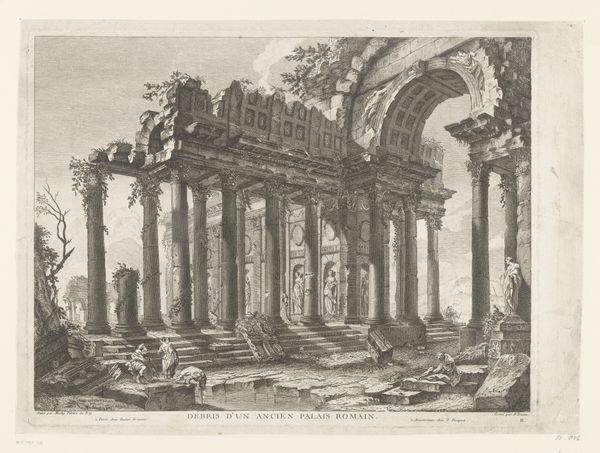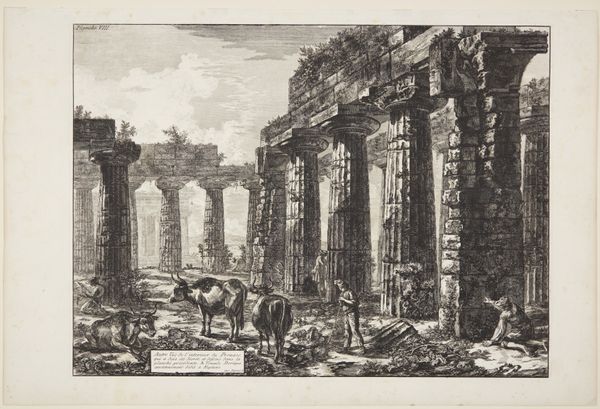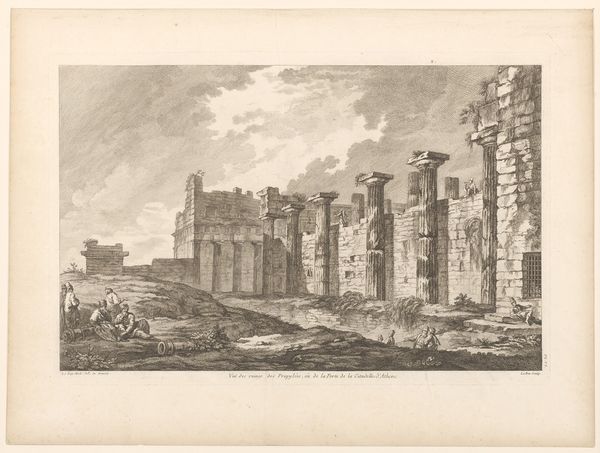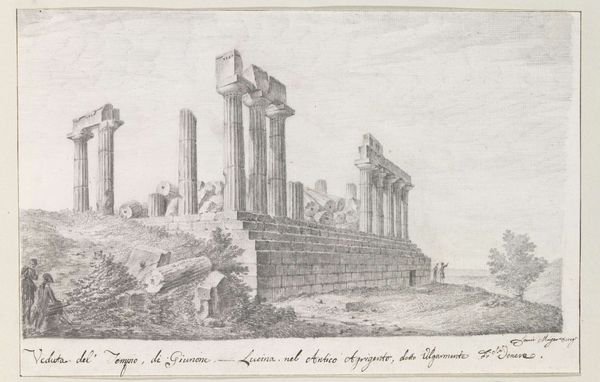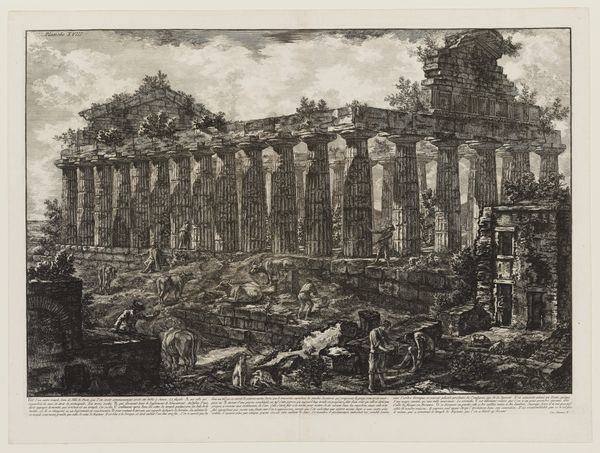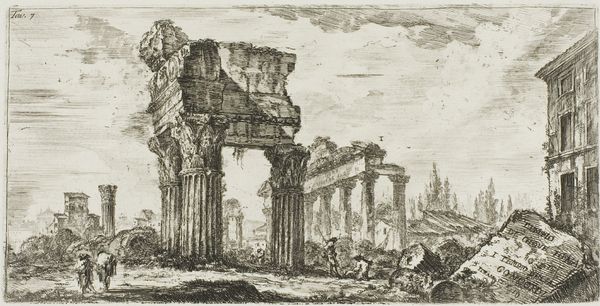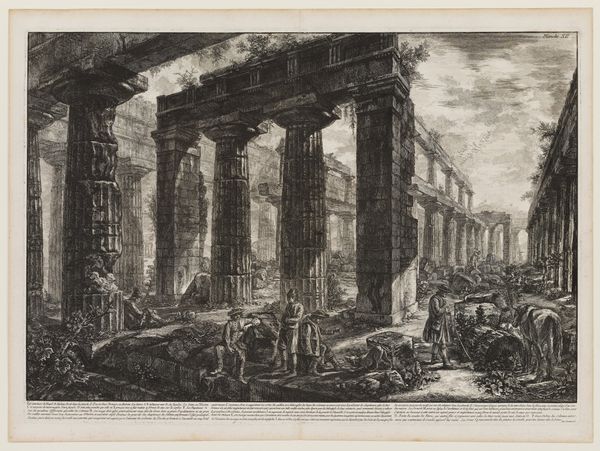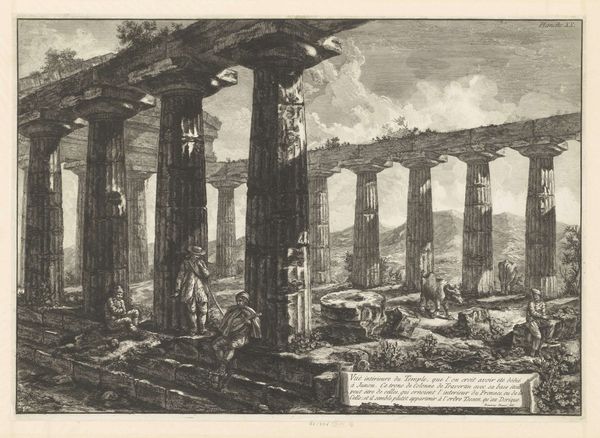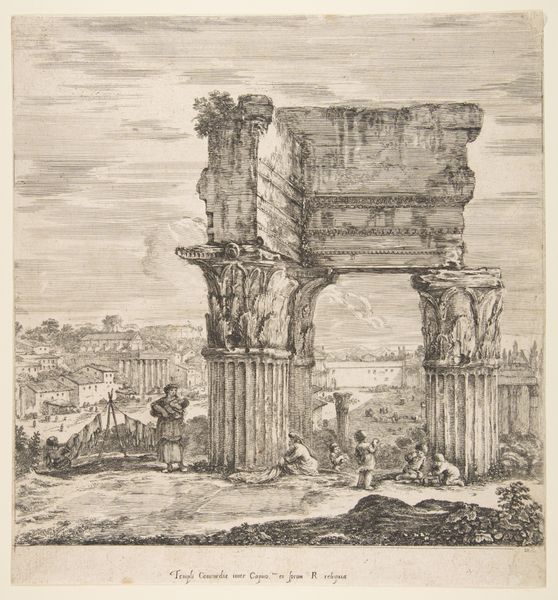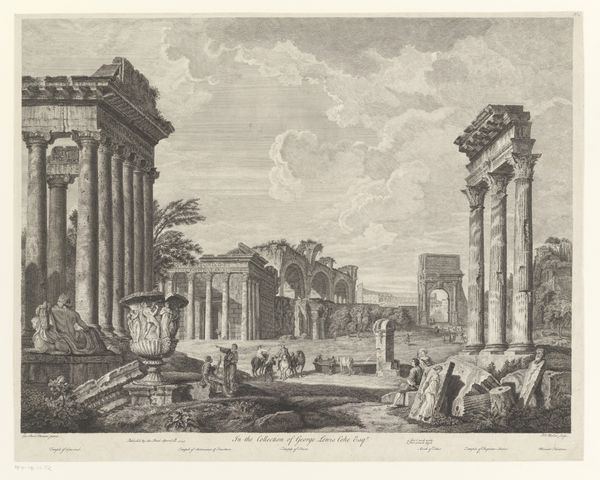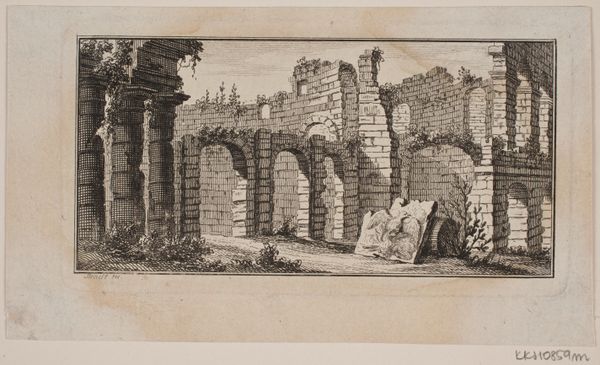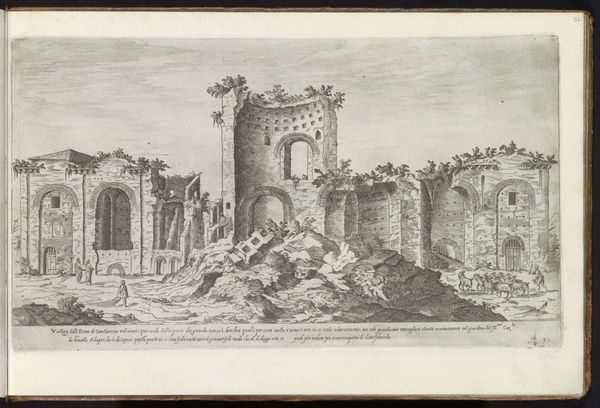
Restanten van de Tempel van Hadrianus te Rome c. 1755 - 1762
0:00
0:00
giovannibattistapiranesi
Rijksmuseum
print, engraving, architecture
#
neoclacissism
# print
#
landscape
#
form
#
ancient-mediterranean
#
line
#
cityscape
#
history-painting
#
engraving
#
architecture
Dimensions: height 269 mm, width 356 mm
Copyright: Rijks Museum: Open Domain
Curator: Giovanni Battista Piranesi created this print, “Restanten van de Tempel van Hadrianus te Rome,” around 1755-1762. It resides here at the Rijksmuseum. What do you make of it? Editor: A certain melancholy permeates it. The precise, almost scientific lines contrast so starkly with the obvious decay. You sense the weight of time collapsing these classical forms. Curator: Indeed. Piranesi, working in a neoclassical vein, constantly evokes both the grandeur and the ruinous nature of the classical past. These ruins weren’t simply objective records; they spoke to the cyclical nature of empires and the power of time. The temple as a symbol—what remains? Editor: The physicality of the stone. Look at the sheer labor involved in quarrying, transporting, and erecting these massive columns. These remnants become documents of human effort. I wonder about the workshops where these columns were carved and the economic engine of their creation. Curator: Yes, each stone whispers of both deliberate design and inevitable erosion. The temple was built for Hadrian; even in Piranesi's time, its meaning was layered with the implications of multiple eras. Piranesi brings those symbolic meanings crashing down on the viewer, though. It becomes less a monument of Hadrian and more of human folly in light of grand aspirations. Editor: Absolutely. The materiality, even captured in a print, emphasizes that physical world—the commerce of its creation, the craftspeople whose hands shaped the forms, and ultimately the market forces which lead to its disintegration and then artistic recreation as a print. Look at how the image invites the viewer to reflect upon each stage of material transformation. Curator: Piranesi allows us to see the artwork as a relic, almost a moral lesson that we can use. It offers us a very long cultural memory. It shows us history from both its most ambitious construction, and slow-moving ruin. Editor: A powerful intersection of art and labor indeed, showing the continuous cycle of creation, usage and eventual entropic undoing, which continues to fascinate to this day.
Comments
No comments
Be the first to comment and join the conversation on the ultimate creative platform.
